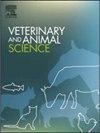对孟加拉国水牛生产力、繁殖效率、遗传改良和疾病管理的全面审查
IF 1.9
Q2 AGRICULTURE, DAIRY & ANIMAL SCIENCE
引用次数: 0
摘要
水牛在孟加拉国的畜牧业中发挥着至关重要的作用,为该国的牛奶和肉类生产做出了重大贡献。然而,由于遗传能力有限、生殖性能差以及保健和管理做法不充分,它们的生产力仍低于潜在水平。本综述严格综合了科学文献、实地研究和国家报告的发现,以评估孟加拉国水牛生产、繁殖效率、遗传改良工作和疾病管理战略的现状。主要挑战包括产奶量低(平均每天2.50-4.00升)、营养不平衡、对传统喂养系统的依赖以及机械化程度低。繁殖效率低下的特点是受孕率低(低于40%),产犊间隔延长(本地:19.36±2.39个月;杂交:19.37±2.63个月),青春期延迟(30 ~ 36个月),发情检测无效。虽然引入了与高产品种(如Murrah和Nili-Ravi)的杂交育种计划,但由于记录保存不足、缺乏性能监测以及继续依赖传统育种方法,进展有限。兽医基础设施不足、疫苗接种覆盖率低以及农民意识有限,进一步阻碍了疾病的预防和控制。诸如缺乏综合发展框架、人工授精(AI)获取受限以及优质种质短缺等结构性障碍也阻碍了部门发展。为了解决这些多方面的问题,该报告主张加强农民教育,扩大人工智能服务,制定针对特定地区的疾病控制战略,并实施结合分子技术的系统遗传改良计划。加强政府机构、研究机构和农业社区之间的合作,对于在孟加拉国培育有韧性、高产和可持续的水牛产业至关重要。本文章由计算机程序翻译,如有差异,请以英文原文为准。
A holistic review of buffalo productivity, reproductive efficiency, genetic improvement, and disease management in Bangladesh
Buffaloes play a vital role in Bangladesh's livestock sector, contributing significantly to the nation’s milk and meat production. However, their productivity remains below potential due to limited genetic capacity, poor reproductive performance, and inadequate health and management practices. This review critically synthesizes findings from scientific literature, field studies, and national reports to assess the status of buffalo production, reproductive efficiency, genetic improvement efforts, and disease management strategies in Bangladesh. Major challenges include low milk yield (average 2.50-4.00 liters/day), imbalanced nutrition, reliance on traditional feeding systems, and minimal mechanization. Reproductive inefficiencies are characterized by low conception rates (below 40%), prolonged calving intervals (local:19.36 ± 2.39 months; crossbred: 19.37 ± 2.63 months), delayed onset of puberty (30 to 36 months), and ineffective estrus detection. Although crossbreeding programs with high-yielding breeds such as Murrah and Nili-Ravi have been introduced, progress has been limited due to inadequate record-keeping, lack of performance monitoring, and continued dependence on conventional breeding methods. Disease prevention and control are further impeded by insufficient veterinary infrastructure, low vaccination coverage, and limited farmer awareness. Structural barriers such as the absence of integrated development frameworks, restricted access to artificial insemination (AI), and a shortage of superior germplasm also hinder sectoral advancement. To address these multifaceted issues, the review advocates for enhanced farmer education, expansion of AI services, development of region-specific disease control strategies, and the implementation of systematic genetic improvement programs incorporating molecular technologies. Strengthened collaboration among government agencies, research institutions, and farming communities is essential to foster a resilient, productive, and sustainable buffalo industry in Bangladesh.
求助全文
通过发布文献求助,成功后即可免费获取论文全文。
去求助
来源期刊

Veterinary and Animal Science
Veterinary-Veterinary (all)
CiteScore
3.50
自引率
0.00%
发文量
43
审稿时长
47 days
 求助内容:
求助内容: 应助结果提醒方式:
应助结果提醒方式:


